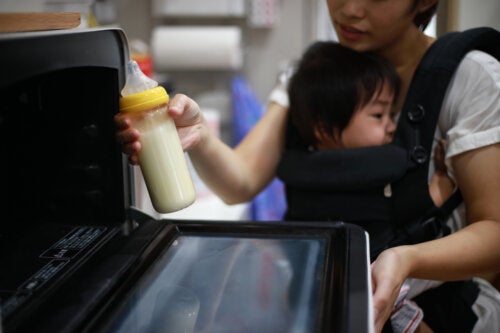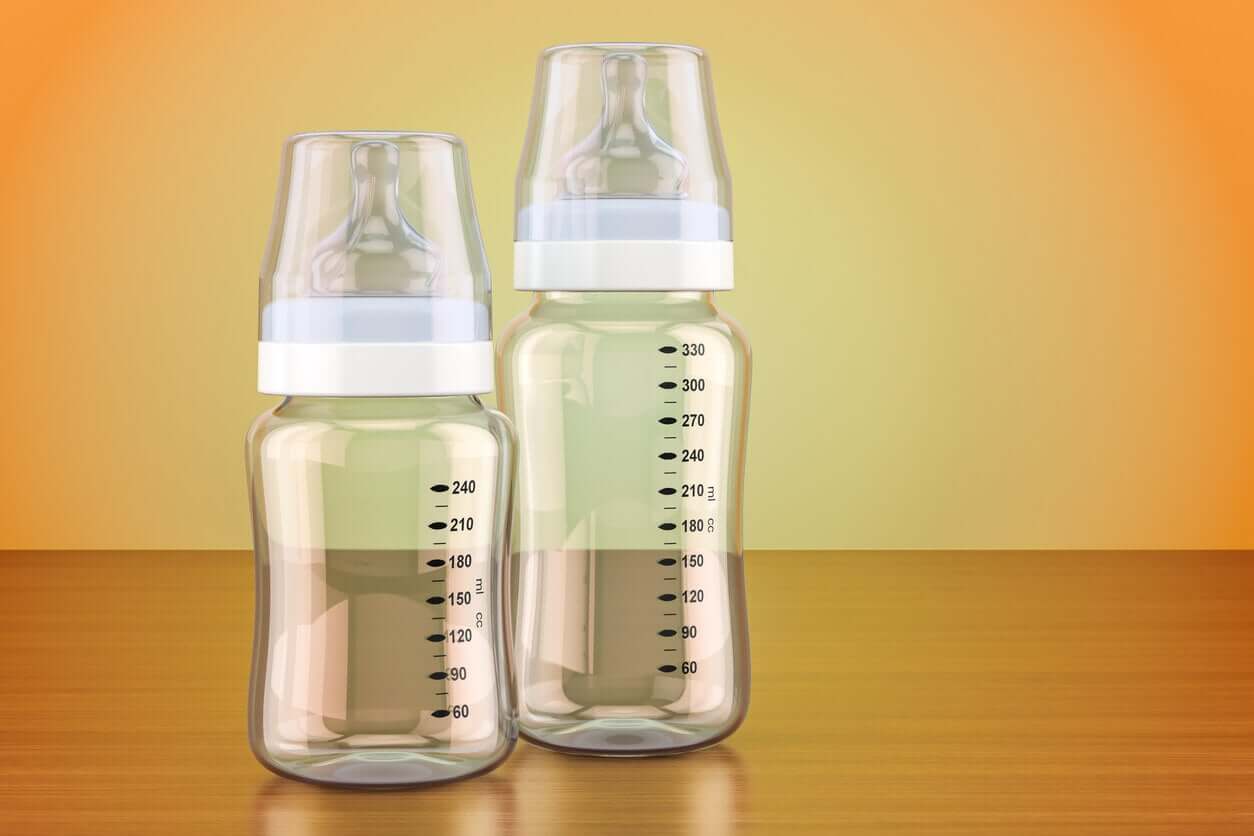Is It Okay to Heat Your Baby’s Milk in the Microwave?
Have you ever thought to heat your baby's milk in the microwave? We'll reveal the reasons to avoid it and be cautious.

The microwave has become a favorite appliance for heating food quickly. However, you need to be cautious when if you want to heat your baby’s milk with this appliance in order to avoid health risks. Not only because of the temperature it can reach, but also because of the material in the container you use.
For this reason, it’s best to use microwavable or glass bottles and follow the instructions that we’ll explain below.
The microwave, a not so great appliance
As the use of this appliance began to spread, many doubts arose about its safety.
Among them, the risk of the appearance of certain diseases due to electromagnetic waves or the loss of nutrients when it’s used as a cooking method. However, none of these theories are supported by science.
However, it’s important to know some proven risks that you can avoid by taking the necessary precautions. Below, we’ll you what they are.
The risk of burns

One of the main risks of heating milk in the microwave is accidentally burning the baby’s body.
The power of the appliance means it takes less time to heat food. Therefore, it’s important that you keep it under control and use it in 30-second intervals and at medium or low power.
At the same time, the heating of food or drink doesn’t occur uniformly and this causes the outer areas that touch the container to burn more than those that are further inside. A good solution for this is to stir the food with a spoon or shake it inside the container.
Remember to taste the child’s food or milk before offering it, and if it’s too hot, let it sit for a few minutes.
The toxicity of plastic containers
Have you heard of bisphenol A? It’s a compound used in the manufacturing of some plastic containers, which in our body, acts as an endocrine disruptor. That is, it behaves as if it were a hormone and alters certain metabolic processes.
When bottles are heated, this substance is released in small amounts, which accumulate in the body. As a consequence, in the medium term, they alter the normal functioning of certain organs and hinder the development of the child.
According to a study published in the Journal of Hazardous Materials, prenatal or early postnatal exposure to bisphenol hampers psychomotor development in children under 2 years of age. Also, for every 10-fold increase during the second trimester, their mental development decreases. This effect was verified for bisphenol A and S, but not for type F.
Another risk associated with early exposure to endocrine disruptors is the development of excess weight and obesity in children. According to a review in the Journal Nature Review of Endocrinology, these substances increase the accumulation of adipose tissue.
At the same time, in 2010 the FDA (Food and Drug Administration) took a position against the use of this component in baby bottles, sippy cups, and artificial milk. However, the Journal of Environmental Science and Health found bisphenol A and S in bottle milk from Italy.
Therefore, the safest option is to use glass containers or to use some alternative method to heat your baby’s milk.

How to heat your baby’s milk
As you’ve seen, heating your baby’s milk in the microwave is possible but involves certain risks. Therefore, it’s usually discouraged unless some precautions are taken. Therefore, you should pay attention to the following recommendations:
- Substitute plastic bottles for ones made from glass. This way, you avoid the presence of bisphenol A.
- Reduce the heating time, as microwaves heat up faster and the heat stays on for longer.
- You can use a bottle warmer to obtain the right temperature and maintain it for a while.
- It’s best to heat water in a saucepan and then immerse the bottle in it. Another option is to heat the milk in the saucepan and once it is hot, pour it into the bottle.
Finally, remember that it’s best to serve milk warm, as it’s more pleasant for babies. For this reason, stir it and taste a bit before giving it to your little one, without drinking directly from the baby’s container.
If you opt for artificial milk, it’s always safer to heat it and thereby destroy any bacteria that can cause food poisoning.
